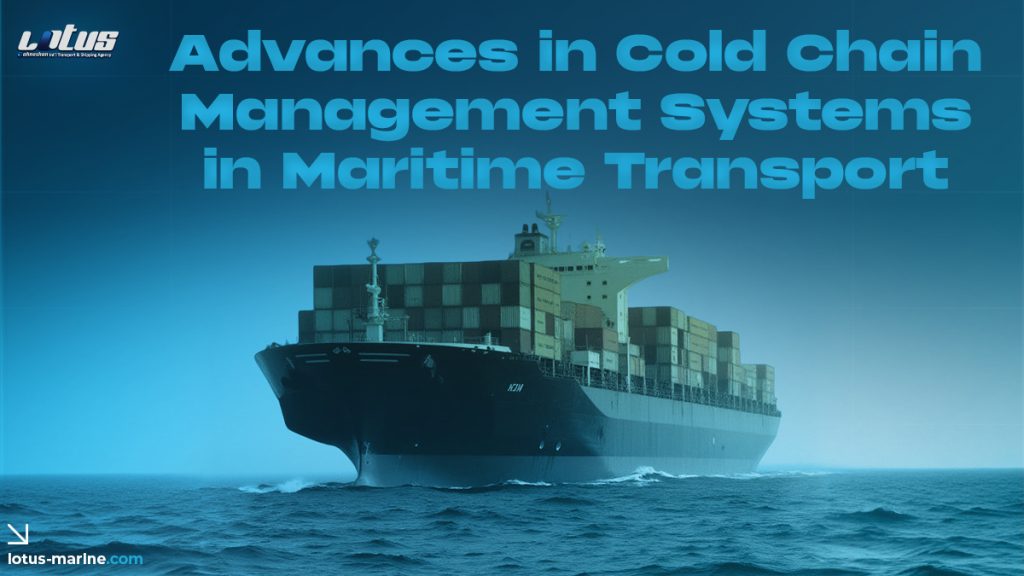Introduction
Maritime transport is a cornerstone of global logistics, especially for industries dependent on the cold chain—such as food, pharmaceuticals, and chemicals. Maintaining the right temperature throughout the supply chain is critical to ensuring product integrity. In recent years, advances in cold chain management systems have revolutionized maritime logistics, improving efficiency, sustainability, and reliability.
What is Cold Chain Management?
Cold chain management refers to the process of maintaining temperature-controlled environments for sensitive goods from origin to destination. It includes refrigerated shipping containers, monitoring technologies, and robust operational protocols to ensure products remain within specified temperature ranges.
The Role of Cold Chain in Maritime Transport
The maritime sector plays a pivotal role in global cold chain logistics, transporting perishable goods over long distances. Key industries relying on this system include food, pharmaceuticals, and chemicals. The primary challenge lies in maintaining consistent temperature and humidity levels during extended sea journeys.
Advances in Cold Chain Technologies
IoT Integration in Refrigerated Containers
Smart sensors embedded in reefer containers provide real-time data on temperature, humidity, and other critical metrics, enabling proactive responses to deviations.
Smart Temperature Monitoring Systems
Advanced monitoring systems now feature predictive algorithms to identify potential risks before they escalate.
AI and Predictive Analytics
Artificial intelligence helps optimize container performance, predict maintenance needs, and ensure route efficiency to preserve cargo quality.
Energy Efficiency and Sustainability
With rising concerns about environmental impact, maritime cold chain systems are adopting sustainable practices. Renewable energy sources like solar panels on reefer containers and hybrid systems reduce energy consumption and emissions, aligning with global sustainability goals.
Real-Time Monitoring and Tracking
GPS-Enabled Tracking
GPS technology ensures accurate tracking of refrigerated cargo, providing live updates on location and condition.
Temperature Deviation Alerts
Automated systems send alerts to operators when temperature thresholds are breached, ensuring quick corrective action.
Automation in Cold Chain Operations
Automated Reefer Container Systems
Automation reduces human error and improves operational efficiency in managing reefer containers.
Role of Robotics
Robotics streamline loading and unloading processes, ensuring speed and precision in handling temperature-sensitive goods.
Challenges in Cold Chain Management
Despite technological advances, cold chain management faces significant challenges:
- Energy Costs: High energy consumption for refrigeration systems.
- Regulatory Compliance: Meeting stringent international standards.
- Equipment Durability: Maintaining systems in harsh marine environments.
Applications in the Pharmaceutical Industry
Pharmaceuticals, especially vaccines and biopharmaceuticals, demand uncompromised cold chain integrity. Recent advancements ensure consistent temperature control, critical for products like COVID-19 vaccines that require ultra-cold storage.
Applications in Food Supply Chains
Refrigerated shipping ensures the freshness of seafood, frozen foods, and other perishable items. Advanced cold chain systems reduce food wastage by maintaining optimal conditions throughout transport.
The Role of Data Analytics
Data analytics allows for:
- Predicting potential equipment failures.
- Optimizing shipping routes to minimize energy use and transit time.
- Ensuring compliance with temperature requirements.
Blockchain in Cold Chain Logistics
Blockchain technology enhances transparency and traceability in cold chain logistics. It provides an immutable record of temperature conditions throughout the journey, ensuring compliance and customer trust.
Global Standards and Regulations
Cold chain management in maritime transport must adhere to international standards, such as:
- Good Distribution Practices (GDP): Guidelines for pharmaceuticals.
- ISO 9001 Certification: Ensuring consistent quality management.
Case Studies
Case Study 1: Vaccine Transport
A leading logistics company successfully transported vaccines across continents using IoT-enabled reefer containers, ensuring zero temperature deviations.
Case Study 2: Seafood Supply Chain
A seafood exporter reduced spoilage by 20% by adopting advanced cold chain monitoring systems.
Future Trends in Cold Chain Management
- 5G Connectivity: Faster data transmission for real-time monitoring.
- Hybrid Containers: Combining electric and traditional refrigeration for efficiency.
- AI-Driven Systems: Further enhancements in predictive analytics.
Conclusion
Advances in cold chain management systems are transforming maritime transport. By adopting cutting-edge technologies like IoT, AI, and blockchain, industries can ensure product integrity, reduce wastage, and meet sustainability goals. Embracing these innovations is crucial for businesses looking to stay competitive in a rapidly evolving market.
FAQs
Q1: What are cold chain management systems?
A1: These systems maintain temperature-controlled environments to protect sensitive goods during transport.
Q2: How does IoT benefit cold chain logistics?
A2: IoT enables real-time monitoring and alerts, ensuring cargo remains within specified temperature ranges.
Q3: What industries rely on maritime cold chains?
A3: Pharmaceuticals, food, and chemicals are the primary industries benefiting from cold chain logistics.
Q4: What challenges does the cold chain face in maritime transport?
A4: Energy costs, regulatory compliance, and equipment durability are significant challenges.
Q5: How does blockchain enhance cold chain transparency?
A5: Blockchain provides an immutable record of temperature conditions, ensuring compliance and building trust.







